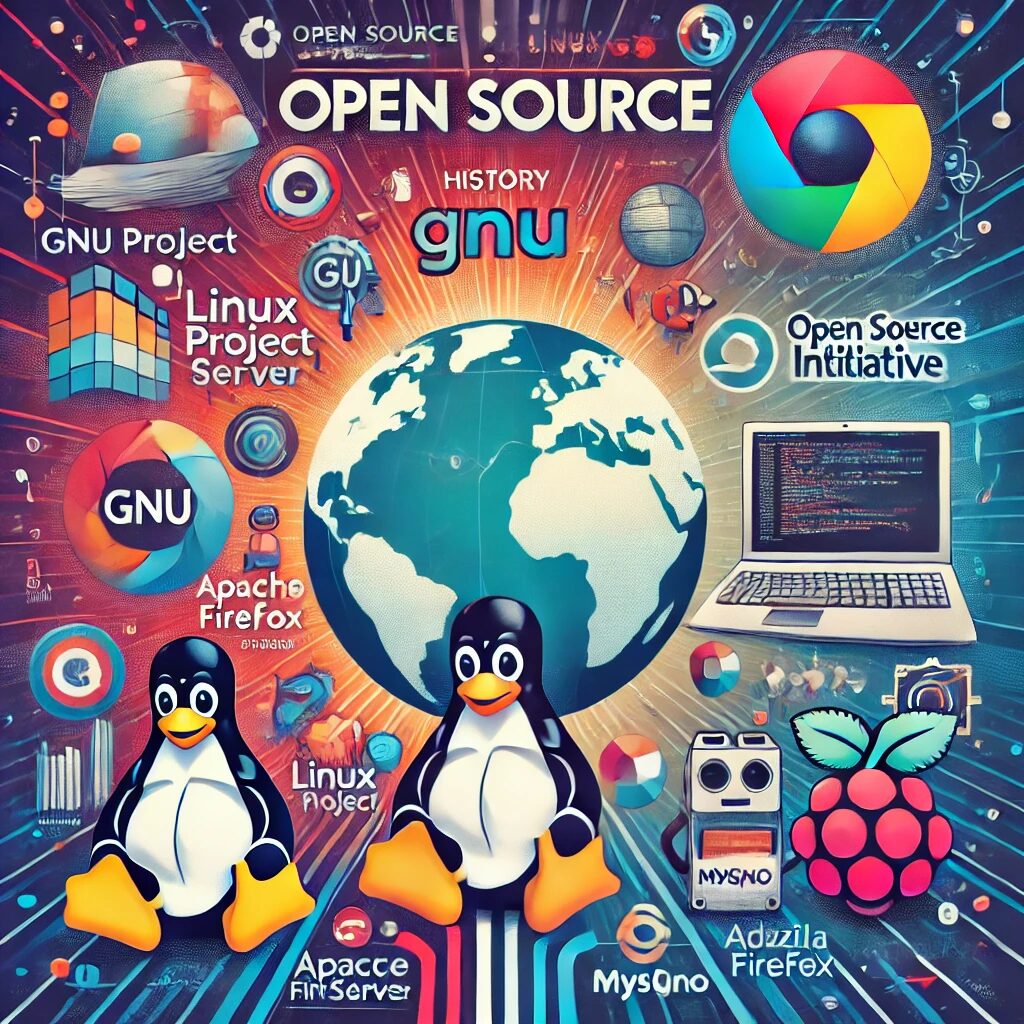Introduction
Open source has revolutionized the way we approach software and hardware development. From its humble beginnings to its widespread adoption today, the open source movement has democratized technology, fostering collaboration, innovation, and accessibility. In this post, we’ll explore the history of open source, its milestones, and how it has transformed the landscape of software and hardware development.
The Early Days
The concept of sharing and collaboration in software development can be traced back to the early days of computing. In the 1950s and 1960s, academic and research institutions shared code freely, with no commercial interests. This culture of openness laid the groundwork for what would eventually become the open source movement.
One of the earliest examples of open source software was the A-2 system developed by IBM in the 1950s, which allowed users to share improvements. However, it wasn’t until the late 1970s and early 1980s that the open source movement began to take shape in a more organized manner.
The GNU Project and the Free Software Foundation
In 1983, Richard Stallman launched the GNU Project with the goal of creating a free Unix-like operating system. Stallman believed that software should be free to use, modify, and distribute. To support this vision, he founded the Free Software Foundation (FSF) in 1985. The FSF developed the GNU General Public License (GPL), which ensured that software released under it would remain free and open.
The GNU Project and the FSF were instrumental in promoting the ideals of free software and laid the foundation for the open source movement. The creation of the GPL was a critical moment, as it provided a legal framework to protect and propagate free software.
The Rise of Linux
In 1991, Linus Torvalds, a Finnish computer science student, released the Linux kernel as a free and open source software. Combined with the GNU tools, Linux became a complete operating system. The collaborative development model of Linux, with contributions from developers worldwide, showcased the power and potential of open source.
Linux’s success spurred the growth of the open source movement, demonstrating that high-quality, reliable software could be developed collaboratively. Major companies and organizations began to take notice, leading to increased investment and support for open source projects.
The Open Source Initiative
In 1998, a group of free software advocates, including Eric S. Raymond and Bruce Perens, founded the Open Source Initiative (OSI). The OSI aimed to promote the benefits of open source software and encourage its adoption in the commercial sector. They rebranded “free software” as “open source” to emphasize the pragmatic benefits and appeal to businesses.
The OSI created the Open Source Definition, which outlined the criteria for open source software, including free redistribution, source code availability, and the ability to create derived works. This helped standardize the concept and provided clarity for developers and companies.
Impact on Software Development
Open source has profoundly impacted software development in several ways:
- Collaboration and Innovation: Open source encourages collaboration among developers, leading to rapid innovation and problem-solving. Projects like the Apache HTTP Server, Mozilla Firefox, and the MySQL database have benefited from contributions from diverse, global communities.
- Quality and Security: Open source software undergoes rigorous peer review, resulting in higher quality and more secure code. The transparency of the code allows vulnerabilities to be identified and fixed quickly.
- Cost Savings: By using open source software, organizations can reduce costs associated with licensing fees. This has made technology more accessible to startups, non-profits, and educational institutions.
- Customization and Flexibility: Open source software can be customized to meet specific needs, providing greater flexibility for developers and organizations. This adaptability has driven the adoption of open source solutions in various industries.
Impact on Hardware Development
The principles of open source have also extended to hardware development, leading to the creation of open hardware projects. Some key impacts include:
- Open Hardware Projects: Initiatives like Arduino and Raspberry Pi have democratized hardware development, making it accessible to hobbyists, educators, and engineers. These platforms provide open specifications, schematics, and software, fostering a culture of innovation.
- Collaborative Development: Just like in software, open source hardware projects benefit from community collaboration. Developers and enthusiasts worldwide contribute to design improvements, share ideas, and create new applications.
- Accessibility and Education: Open hardware has played a significant role in STEM education, providing affordable tools for learning and experimentation. Students and educators can access high-quality resources without the barriers of proprietary systems.
- Sustainability: Open hardware promotes sustainability by allowing users to repair and modify their devices. This reduces electronic waste and extends the lifespan of products.
Conclusion
The history of open source is a testament to the power of collaboration and the belief that technology should be accessible to all. From its early beginnings to its current widespread adoption, open source has transformed the landscape of software and hardware development. By fostering innovation, improving quality, and promoting accessibility, open source continues to shape the future of technology.
As we look ahead, the principles of open source will undoubtedly continue to drive progress, enabling new possibilities and empowering individuals and communities around the world.


